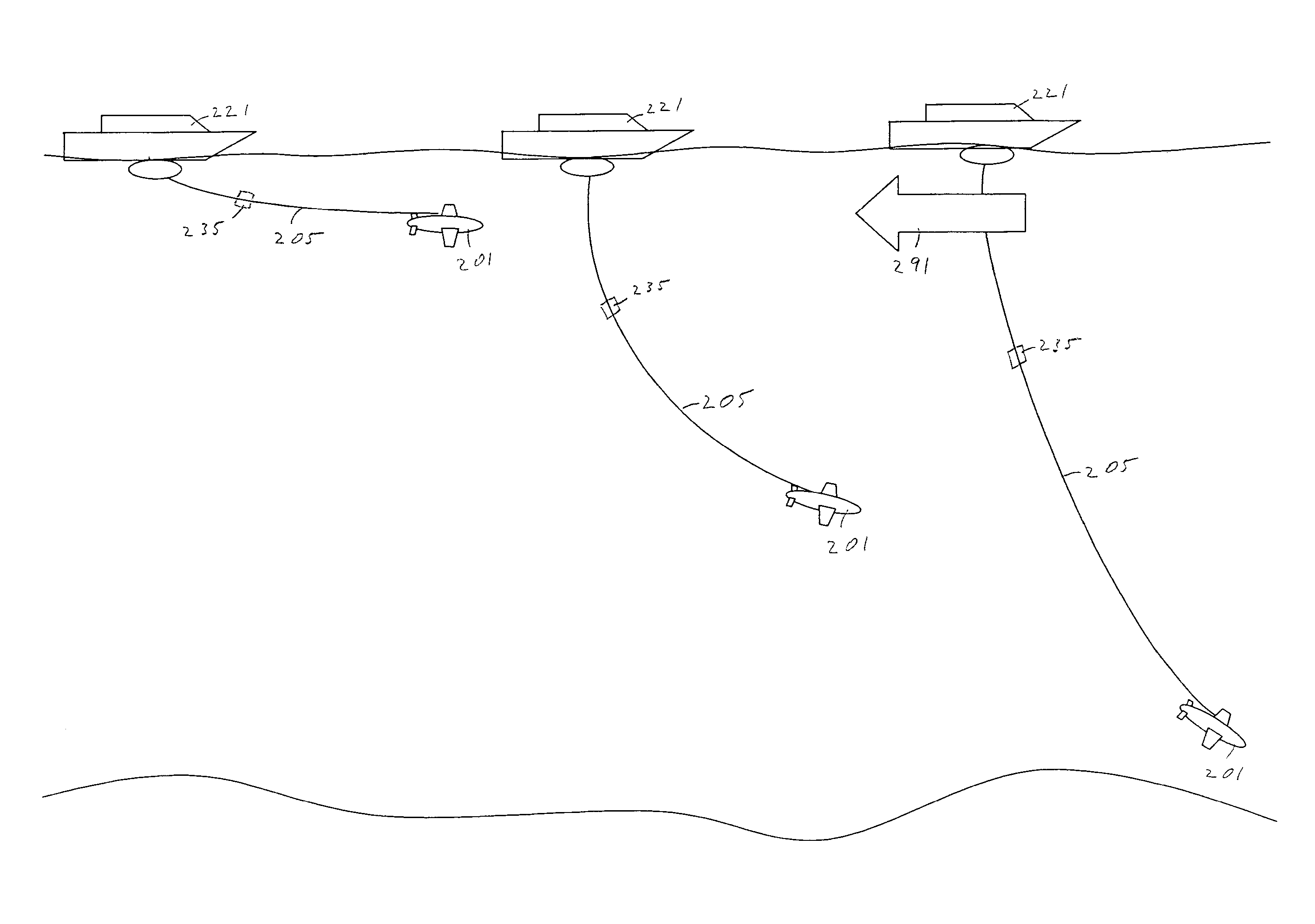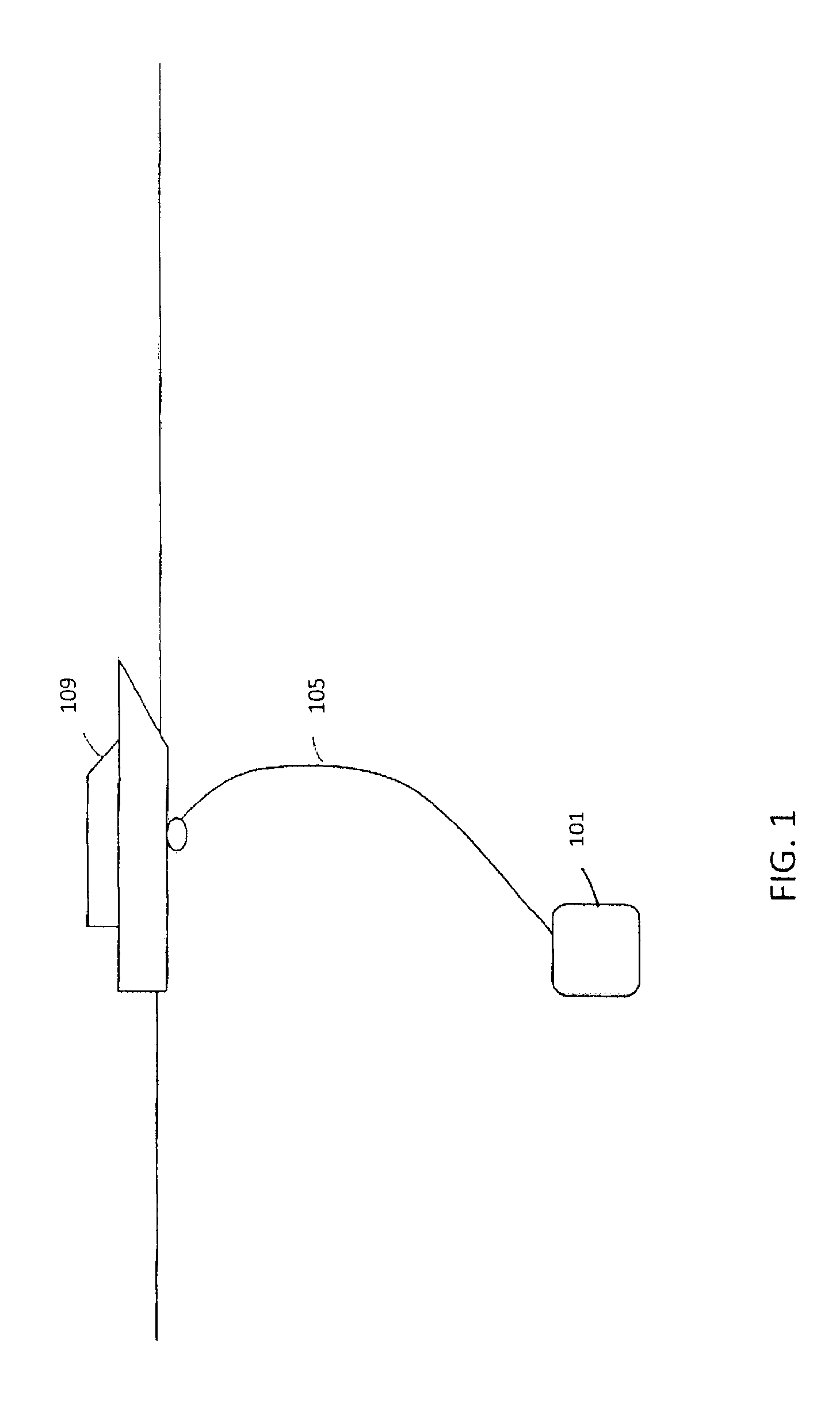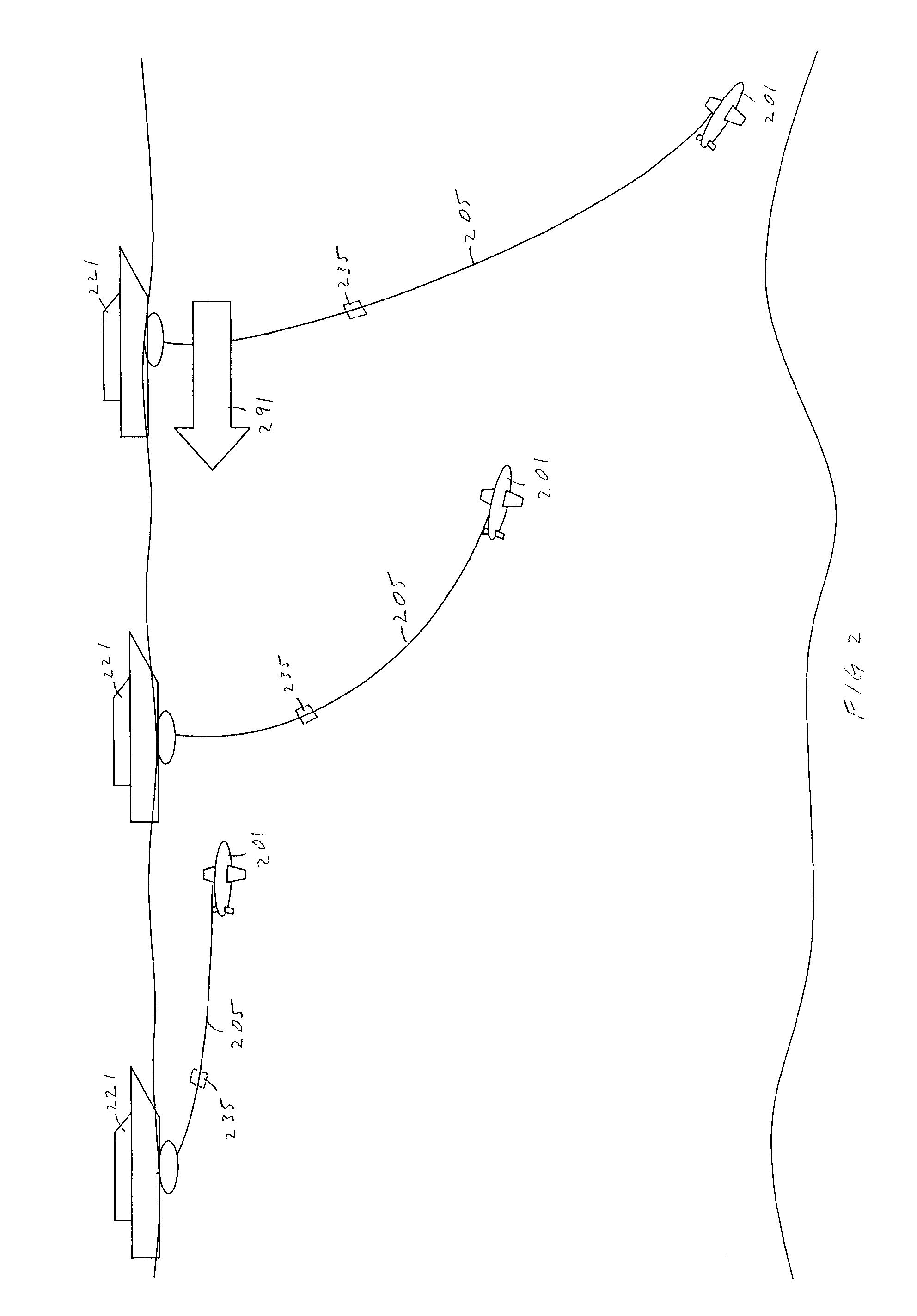Remotely operated underwater vehicle
a remote-operated, underwater technology, applied in underwater equipment, special-purpose vessels, tethers, etc., can solve the problem of more drag forces, and achieve the effect of more drag forces and sufficient room
- Summary
- Abstract
- Description
- Claims
- Application Information
AI Technical Summary
Benefits of technology
Problems solved by technology
Method used
Image
Examples
Embodiment Construction
[0011]In order to drive the winged ROV, an alternate means for power is required. Various energy systems can be employed to provide on board power for the ROV. In a preferred embodiment, the invention's power is provided by lithium ion batteries as used on Hawkes designed manned submersibles. In addition to the power supply, an optical communications system is also required. The data transfer rate for high bandwidth communications sufficient to support a closed circuit television may require data transfer rate of about 1-12 Mega Bytes per second (MBps).
[0012]With reference to FIG. 2, the present invention includes an ROV 201 that is permanently attached to a communications tether 205 that enables high bandwidth communications between the winged ROV 201 and the support ship 221. The communications tether 205 includes an optical fiber and / or an electrically conductive wire. The communications between the optical fiber require an optical transmitter that transmits data signals in the f...
PUM
 Login to View More
Login to View More Abstract
Description
Claims
Application Information
 Login to View More
Login to View More - R&D
- Intellectual Property
- Life Sciences
- Materials
- Tech Scout
- Unparalleled Data Quality
- Higher Quality Content
- 60% Fewer Hallucinations
Browse by: Latest US Patents, China's latest patents, Technical Efficacy Thesaurus, Application Domain, Technology Topic, Popular Technical Reports.
© 2025 PatSnap. All rights reserved.Legal|Privacy policy|Modern Slavery Act Transparency Statement|Sitemap|About US| Contact US: help@patsnap.com



